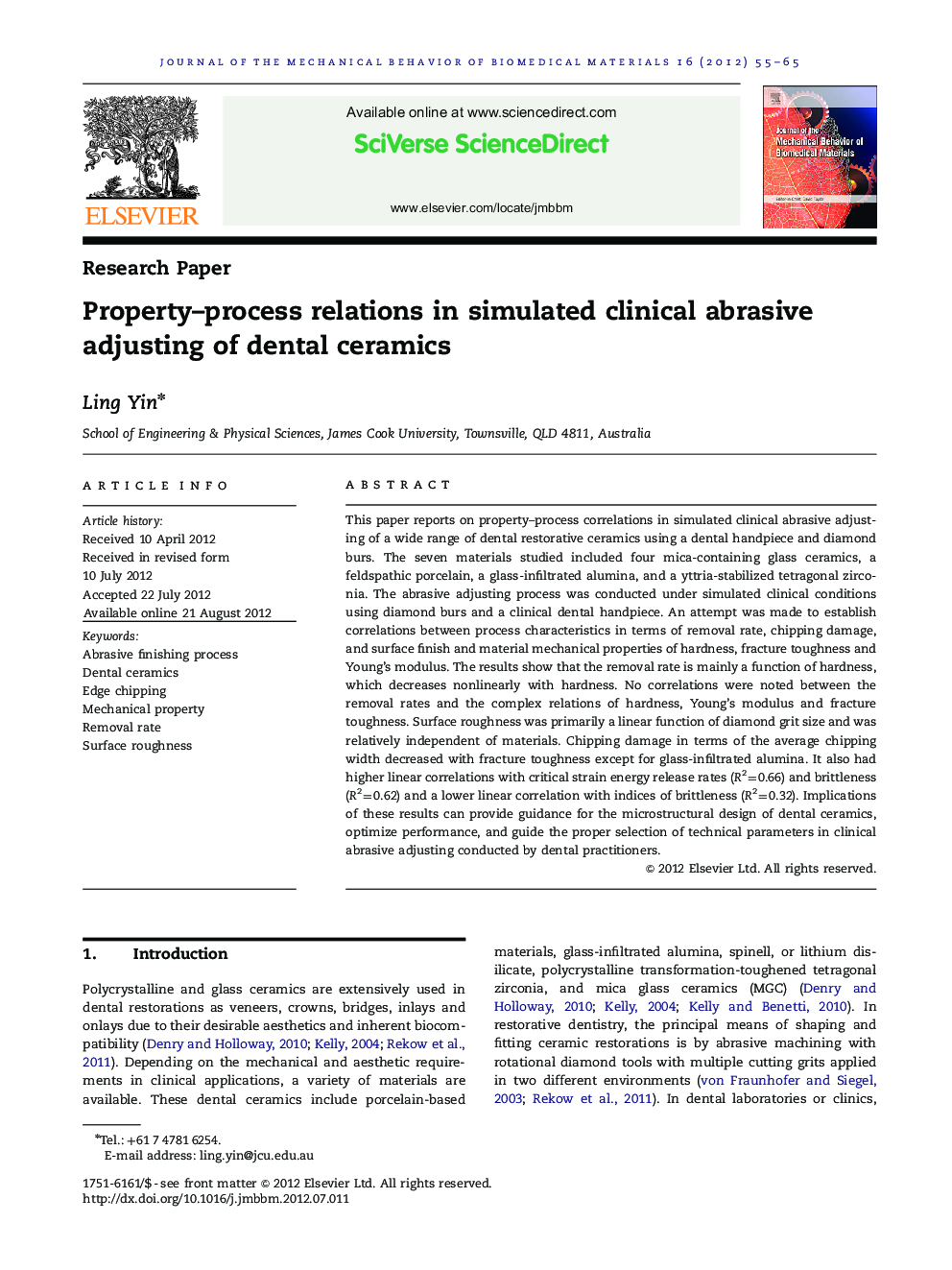| Article ID | Journal | Published Year | Pages | File Type |
|---|---|---|---|---|
| 810949 | Journal of the Mechanical Behavior of Biomedical Materials | 2012 | 11 Pages |
This paper reports on property–process correlations in simulated clinical abrasive adjusting of a wide range of dental restorative ceramics using a dental handpiece and diamond burs. The seven materials studied included four mica-containing glass ceramics, a feldspathic porcelain, a glass-infiltrated alumina, and a yttria-stabilized tetragonal zirconia. The abrasive adjusting process was conducted under simulated clinical conditions using diamond burs and a clinical dental handpiece. An attempt was made to establish correlations between process characteristics in terms of removal rate, chipping damage, and surface finish and material mechanical properties of hardness, fracture toughness and Young's modulus. The results show that the removal rate is mainly a function of hardness, which decreases nonlinearly with hardness. No correlations were noted between the removal rates and the complex relations of hardness, Young's modulus and fracture toughness. Surface roughness was primarily a linear function of diamond grit size and was relatively independent of materials. Chipping damage in terms of the average chipping width decreased with fracture toughness except for glass-infiltrated alumina. It also had higher linear correlations with critical strain energy release rates (R2=0.66) and brittleness (R2=0.62) and a lower linear correlation with indices of brittleness (R2=0.32). Implications of these results can provide guidance for the microstructural design of dental ceramics, optimize performance, and guide the proper selection of technical parameters in clinical abrasive adjusting conducted by dental practitioners.
